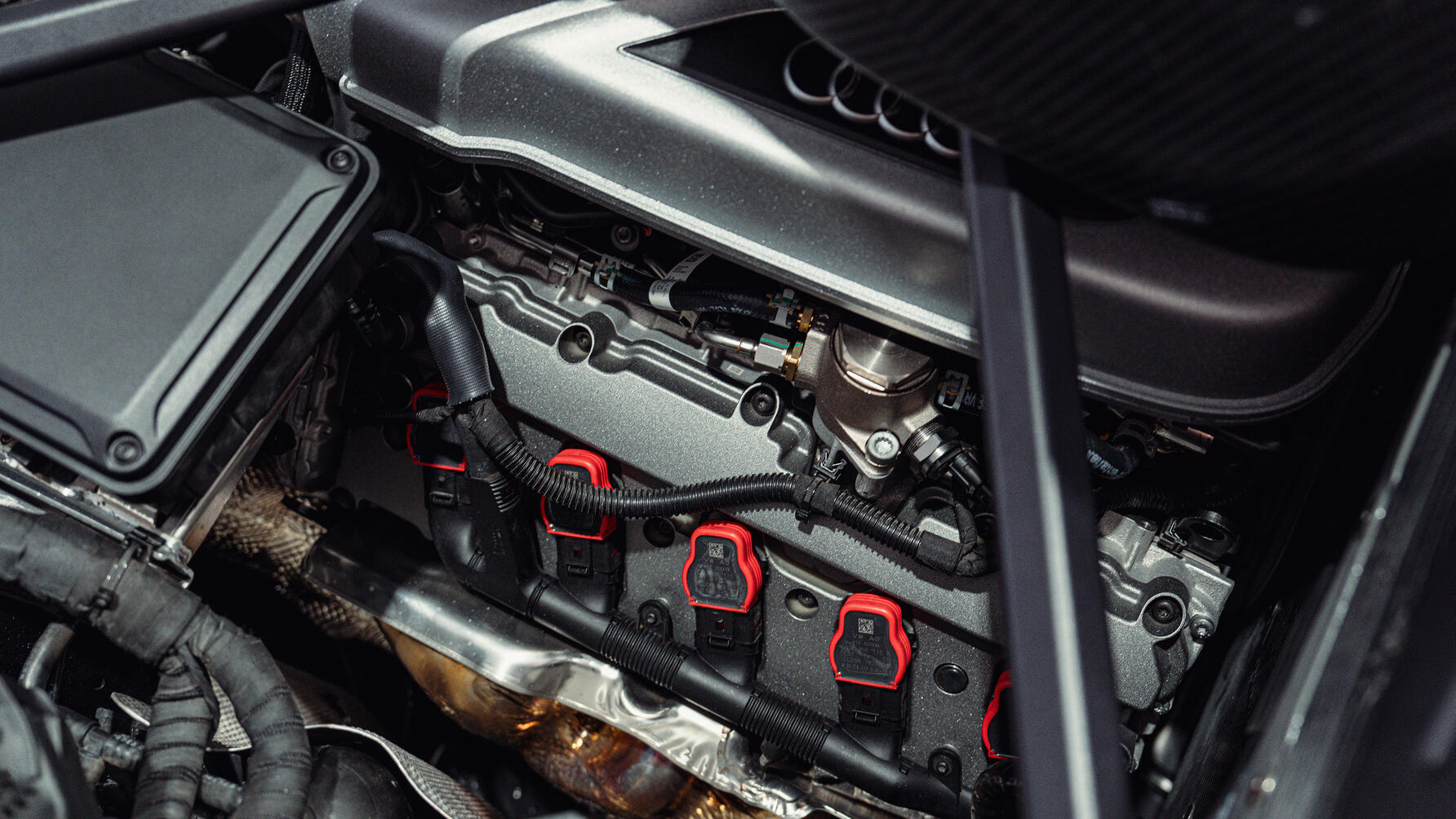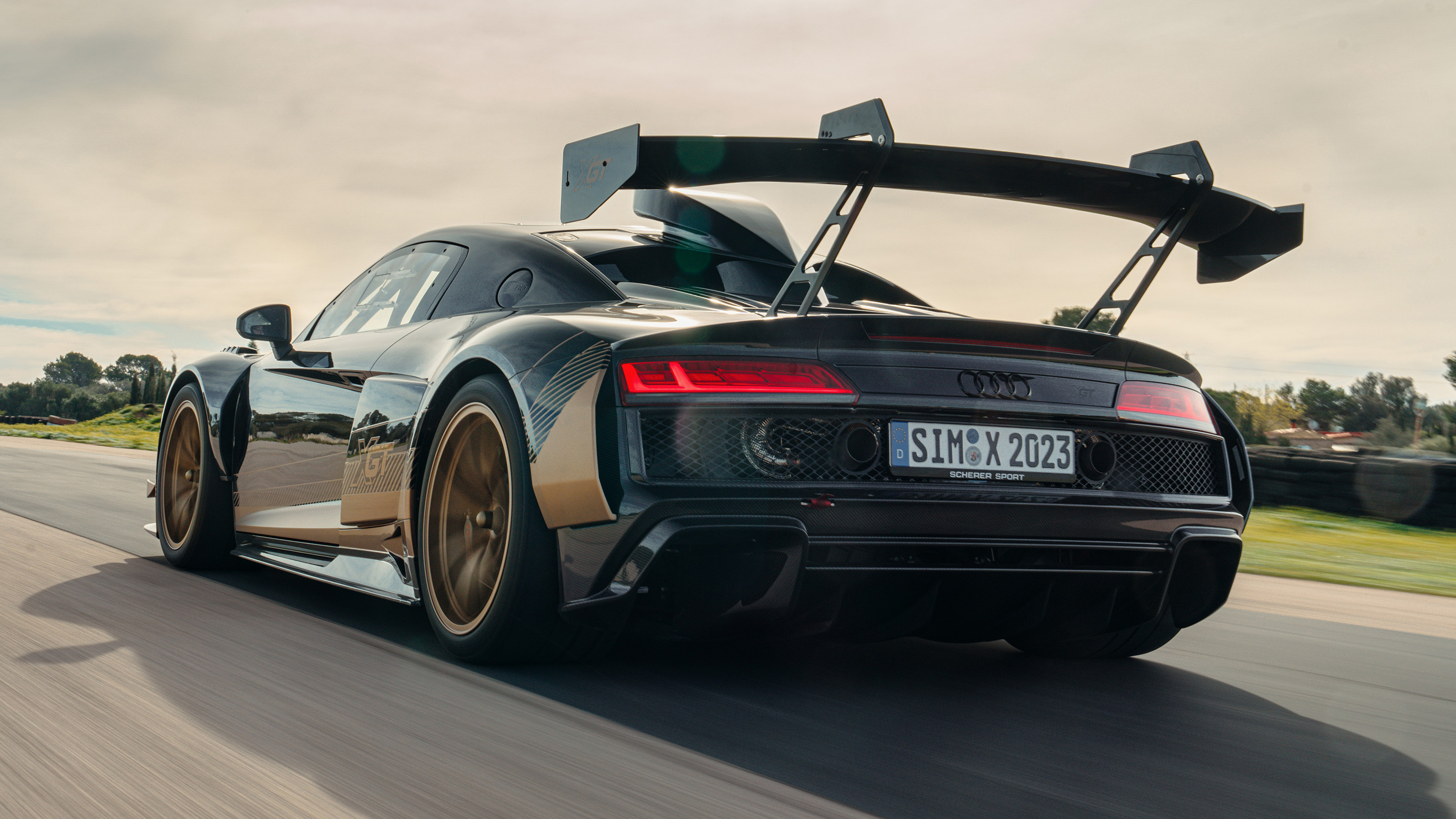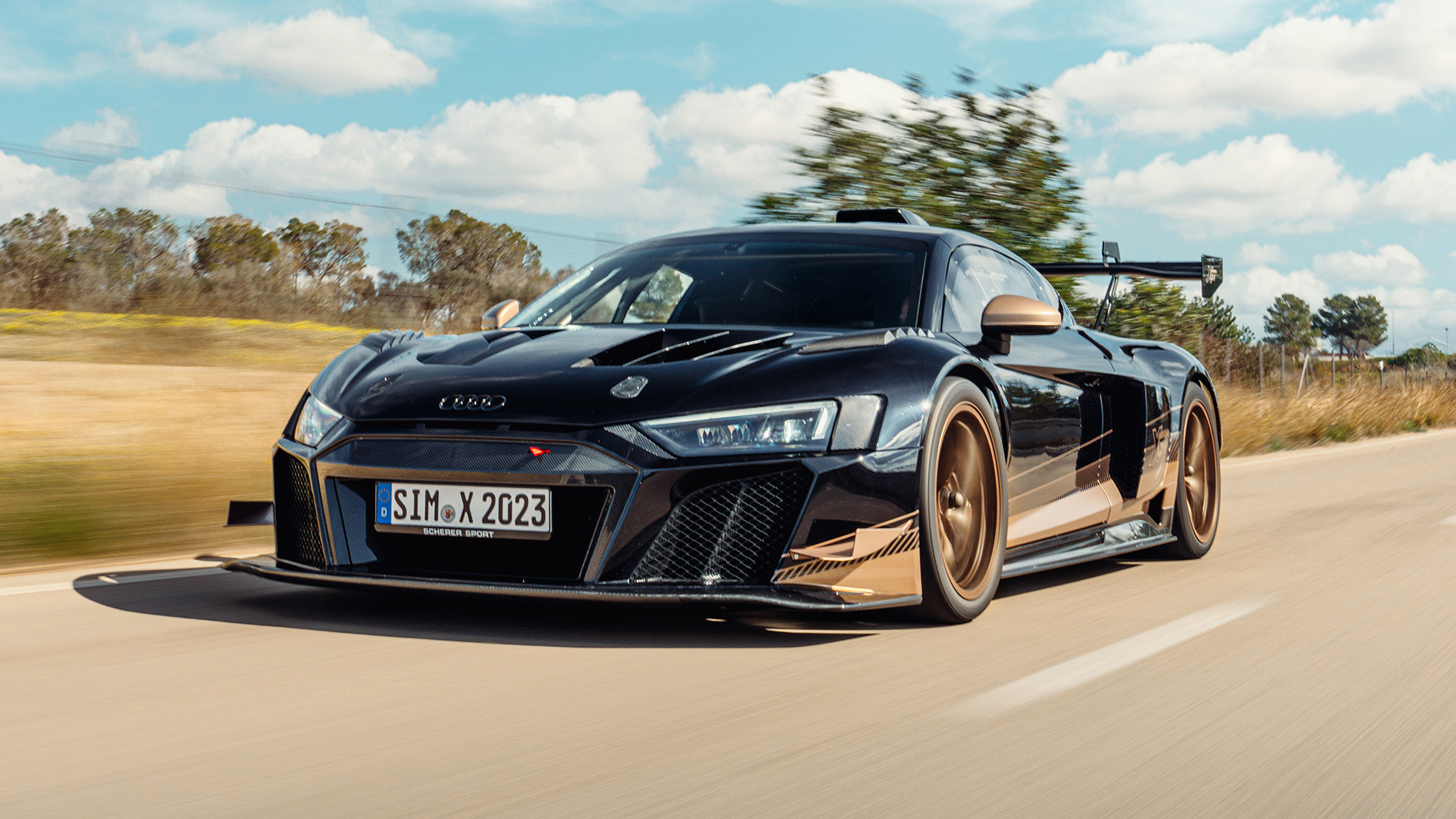
Abt XGT review: forget the Ferrari SF90 XX, you need one of these
£511,000 when new
What in the name of Vader’s codpiece is that?
It does have that look about it, doesn’t it? But what we actually have here is perhaps the purest expression of ‘race car for the road’ since the McLaren F1 LM. I know what you’re thinking: how about the Aston Martin Valkyrie or AMG One? Nope, they were never race cars, they just feature F1 tech.
Wrong, I’m thinking Porsche 911 GT1 and Mercedes CLK GTR!
Again no, because those late Nineties icons were homologation specials – the road cars had to be built to allow the race versions to race. From Ferrari’s FXX-K to McLaren’s P1 GTR, road cars being made into track cars is relatively common. But what we have here is a genuine race car turned into a road car. Yes, we’ve seen this before (think of the Kremer 935 or Schuppan 962 and if you can’t, go and look them up immediately), but the difference here is that the Abt XGT isn’t a one-off. They’re going to build 99 of these.
The what?
Abt XGT. It’s not an Audi R8, but telling you why that is will take a brief moment. Abt (it’s a surname, not an acronym), is an independent race team and purveyor of tuning parts for VW and Audi. As Audi’s DTM partner, it’s won multiple championships. Now Abt has been very successful so it enjoys semi-official status.
But this project is all its own work. Audi builds an R8 LMS GT2 for global customer racing programs. You could buy one if you really wanted, for about £400,000. Abt takes that and then converts it back to road use. In the process so much work is done that the car no longer wears an Audi VIN plate – Abt is certified as the manufacturer.
How much work are we talking?
It’s quite possible to road legalise a race car… if you’re just building a one-off (just ask our own Mark Riccioni). But if you’re building 99 of them and choosing to do that in Germany there are many, many hoops to go through. It’s taken Abt two years to get full TUV certification. We’re not just talking indicators and number plates – they’ve had to crash test one of these. Twice. And put it through drive-by noise tests and full WLTP emissions and fuel economy checks (473g/km and 13.6mpg, if you’re wondering).
Rewind a sec… it’s had to be crash tested twice?
Yes, one car. The front impact caused so little damage that the same chassis then did the side impact as well.
So what has had to be changed from the race car?
Not the ridiculous rear wing, nor the carbon body panels which add inches to the width either side. But three major things have been changed – all for driver comfort and refinement.
The most major is the gearbox. That’s not a straight cut single clutch racing transmission, but a seven-speed twin clutch. That might seem a cop out, but if you’ve ever driven anything with a straight cut racing gearbox you’ll know just how undrivable that would be on the road. The clutch would last a few hundred yards.
Next is the bushing. The engine is the race car’s 640bhp 5.2-litre nat asp V10, but it’s no longer rigid mounted to the back of the chassis tub. That, as anyone who’s driven an Aston Valkyrie will know, is a recipe for excessive noise and vibration.
Top Gear
Newsletter
Thank you for subscribing to our newsletter. Look out for your regular round-up of news, reviews and offers in your inbox.
Get all the latest news, reviews and exclusives, direct to your inbox.
Then there’s the suspension. It’s still four-way adjustable coilovers, but it’s no longer rose jointed. Again, there’s bushings in the mounts so the car is more stable at high speeds – and let’s face it, this is going to be used for howling down autobahns. Although with that rear wing upsetting the airflow it probably won’t accelerate any quicker than a regular R8 once above 150mph. Top speed is 193mph.
But it must be a fair bit lighter than the road car?
To the tune of around 350kg. Abt has resisted fitting noise insulation or loads of gadgets and tech. In fact, at around 1,400kg in total it only weighs about 50kg more than the race car.
Does it feel like driving a race car on the road?
It feels bonkers, but not as bonkers as it looks. Inside, sat snug in a DTM seat that’s had to have its winged headrests cut back to improve side visibility, you steer with a button-laden race wheel, look out past integrated roll cages and jab at motorsport switchgear on the centre console.
The engineering and functionality of all this is wonderful, there’s a real tactility and precision to the buttons that you rarely get in road cars, a sense that everything is there to serve an ergonomic purpose. Design hasn’t been allowed to interfere at all, so while everything operates beautifully, don’t expect much from the visuals.
Outwardly, people gasp and point and stare. It looks bananas on the road, all slats and vents, cuts and slashes. The ride height has been lifted a little to help get the carbon splitter over speedbumps, but so the arches are still packed out, larger wheels have been fitted (19s at the front, 20s rear). Spindly wing supports dangle the rear wing from above, the snorkel curves up from the rear deck jutting aggressively into the airflow. It just looks wonderfully out of place because it’s so purposeful, so clearly intended to only spend a life on track.
Did I spy two fuel flaps?
You did, and one will happily guzzle your 98 Octane into its 83-litre tank. But don’t try the same the other side – find that one you’ll find the nozzle for the built in airjacks.
Of course you will. So what’s it like to drive?
Turns out Abt really knows what it’s doing. It’s amazingly benign and capable on road. It rides ridiculously well in the way that cars do when they’re fitted with pukka race springs and dampers and have little unsprung mass to cope with. The XGT is calm and stable, comes across as fabulously well controlled, no unnecessary movements.
You wouldn’t want to spend more than a couple of hours at a time in it, but not because of bum comfort – noise is the bigger issue. It’s very nice noise, because it’s coming from a free-breathing V10, but it does eventually get wearing. Good luck if you haven't got a passenger to chat to. Or yell at.
Other things to note: the turning circle isn’t great, and with no top section to the steering wheel, you end up pressing down on the ends when you’re manoeuvring. But at least you don’t have to fear that: throttle and clutch control is exemplary, so you can happily crawl around town. Just watch that splitter, ground clearance isn’t that good. And the brakes. Very, very squeaky until used hard.
Is the engine well mannered?
Almost too much. It’s not much more unhinged than the R8 road car’s, which already produces 620bhp. The 8,000rpm limiter cuts in all too soon, you want the change up lights to give you a bit more time, let those pistons really reach a frenzied crescendo. But it does sound special. Even more so from outside. Abt may have got it through drive-by noise regs, but once above 5,500rpm it makes a properly good racket, audible from a long way off.

One issue is that the XGT isn’t actually stupidly fast. 640bhp isn’t a standout figure these days, and 1400kg is ballpark for a McLaren 750S. Like many race cars, the competence in other areas means the straight line shove is the least impressive thing about it. The traction out of corners however…
You telling me this is 4WD?
No, it’s not, but it does wear a beefy set of Pirelli Trofeo R tyres, which is the next best thing. And if you want the next better thing, you can spec your XGT with full racing slicks. Just not for the road, OK?
Once you get a bit of temp into the tyres you nullify the understeer and can start to push and then what you find is the most ridiculously communicative back axle. Push hard out of corners and you feel the rear diff start to lock up and both wheels drive you forward. Give it a bit too much now and the tyres start to smear themselves wide, but it all happens so progressively and calmly that you barely need to back off the throttle. The XGT gives you time. Everything happens calmly, progressively. It’s friendly, approachable.
OK, so does it deliver a genuine race experience?
Yeah, it does. It’s detectably a more serious car than, say, a Porsche GT3 RS, McLaren Senna or any other track-only supercar – Ferrari’s SF90 XX springs to mind. I think it’s that it doesn’t have to try so hard. It’s already a genuine race car, so it’s not acting the part, it’s just had a splash of civility thrown at it.
Sure, the gearbox isn’t anywhere near as vicious, and on track you miss that kick – and you also ‘miss’ the fidget and fight from rose-jointed suspension. Well, only if you’re a pro-driver. For the rest of us that behaviour is unsettling. The car might be faster and provide more feedback, but the XGT does a formidable filtering job. There’s still plenty of info, but you have confidence in it.
OK, end point: how much are we talking?
598,000 euros including tax, equivalent to £511,000, significantly undercutting that Ferrari SF90 XX. Which has over 1,000bhp. And a hi-fi. But if it was my money, I’d sooner have one of these. Not only because it’s rarer, but because there’s a racing authenticity to the XGT that others struggle to match. If you can’t see the point of spending this much on an Audi, good. It’s not for you. The brand and badge are largely by-the-by here, what matters is the experience. I’m struggling to think of any car that better bridges that tricky gap between road and race.
Photography: Mark Riccioni
Featured

Trending this week
- Car Review
BMW 1 Series









